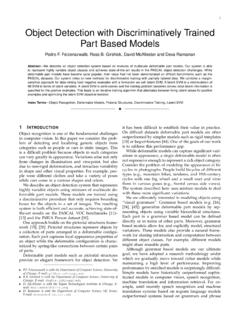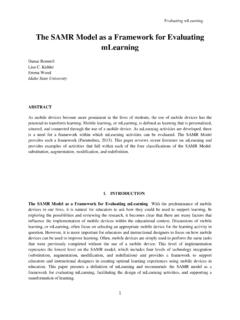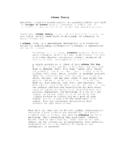Transcription of Abstract arXiv:2103.02603v2 [cs.CV] 9 May 2021
1 Towards Open World object DetectionK J Joseph , Salman Khan ?, Fahad Shahbaz Khan , Vineeth N Balasubramanian Indian Institute of Technology Hyderabad, India Mohamed bin Zayed University of AI, UAE?Australian National University, Australia Link oping University, have a natural instinct to identify unknown ob-ject instances in their environments. The intrinsic curiosityabout these unknown instances aids in learning about them,when the corresponding knowledge is eventually motivates us to propose a novel computer vision prob-lem called: Open World object Detection , where a modelis tasked to: 1) identify objects that have not been intro-duced to it as unknown , without explicit supervision to doso, and 2) incrementally learn these identified unknown cat-egories without forgetting previously learned classes, whenthe corresponding labels are progressively received. Weformulate the problem, introduce a strong evaluation pro-tocol and provide a novel solution, which we call ORE:Open World object Detector, based on contrastive cluster-ing and energy based unknown identification.
2 Our experi-mental evaluation and ablation studies analyse the efficacyof ORE in achieving Open World objectives. As an interest-ing by-product, we find that identifying and characterisingunknown instances helps to reduce confusion in an incre-mental object detection setting, where we achieve state-of-the-art performance, with no extra methodological hope that our work will attract further research into thisnewly identified, yet crucial research IntroductionDeep learning has accelerated progress in object Detec-tion research [14, 54, 19, 31, 52], where a model is taskedto identify and localise objects in an image. All existing ap-proaches work under a strong assumption that all the classesthat are to be detected would be available at training challenging scenarios arises when we relax this as-sumption: 1) A test image might contain objects from un-known classes, which should be classified asunknown.
3 2)As and when information (labels) about such identified un-knowns become available, the model should be able to in-crementally learn the new class. Research in developmen-tal psychology [41, 36] finds out that the ability to iden-tify what one doesn t know, is key in captivating code: et al. [JMLR 17]Problem DifficultyOpen Set LearningIncrementalLearningClassificatio nDetectionBendale and Boult [CVPR 15]Yoshihashi et al. [CVPR 19]Pereraetal. [CVPR 20]Neal et al., [CVPR 18]Bendale et al. [CVPR 16]Scheireretal. [TPAMI 14]Ours: Open-world DetectionMiller et al. [ICRA 18] Miller et al. [ICRA 19] Dhamijaet al. [WACV 20] Hao et al. [ICME 19]Chenet al. [IJCNN 19]Shmelkov et al., [ICCV 17]Aljundi et al. [ECCV 18]Mallya et al. [CVPR 18]Chaudhryet al. [ICLR 18]Rebuffi et al. [CVPR 17]Rajasegaran et al. [NeurIPS 19]Figure 1: Open World object Detection (F) is a novel problemthat has not been formally defined and addressed so far.
4 Thoughrelated to the Open Set and Open World classification, Open WorldObject Detection offers its own unique challenges, which whenaddressed, improves the practicality of object a curiosity fuels the desire to learn new things [9, 16].This motivates us to propose a new problem where a modelshould be able to identify instances of unknown objects asunknown and subsequently learns to recognise them whentraining data progressively arrives, in aunifiedway. We callthis problem setting asOpen World object number of classes that are annotated in standard vi-sion datasets like Pascal VOC [10] and MS-COCO [32] arevery low (20 and 80 respectively) when compared to the in-finite number of classes that are present in the open an unknown as an unknown requires stronggeneralization. Scheireret al. [57] formalise this asOpenSetclassification problem. Henceforth, various methodolo-gies (using 1-vs-rest SVMs and deep learning models) hasbeen formulated to address this challenging setting.
5 Ben-daleet al. [3] extend Open Set to anOpen Worldclassifi-cation setting by additionally updating the image classifierto recognise the identified new unknown classes. Interest-ingly, as seen in Fig. 1, Open World object detection is un-explored, owing to the difficulty of the problem advances in Open Set and Open World image clas-sification cannot be trivially adapted to Open Set and OpenWorld object detection, because of a fundamental differencein the problem setting:The object detector is trained to de-tect unknown objects as of manyunknown classes would have been already introduced [ ] 9 May 2021the object detector along with known objects. As they arenot labelled, these unknown instances would be explicitlylearned as background, while training the detection al. [8] find that even with this extra training sig-nal, the state-of-the-art object detectors result in false pos-itive detections, where the unknown objects end up beingclassified as one of the known classes, often with very highprobability.
6 Milleret al. [43] propose to use dropout sam-pling to get an estimate of the uncertainty of the object de-tection prediction. This is the only peer-reviewed researchwork in the open set object detection literature. Our pro-posed Open World object Detection goes a step further toincrementally learn the new classes, once they are detectedas unknown and an oracle provides labels for the objects ofinterest among all the unknowns. To the best of our knowl-edge this has not been tried in the Open World object Detection setting is much morenatural than the existing closed-world, static-learning set-ting. The world is diverse and dynamic in the number, typeand configurations of novel classes. It would be naive toassume that all the classes to expect at inference are seenduring training. Practical deployments of detection systemsin robotics, self-driving cars, plant phenotyping, healthcareand surveillance cannot afford to have complete knowledgeon what classes to expect at inference time, while beingtrained in-house.
7 The most natural and realistic behav-ior that one can expect from an object detection algorithmdeployed in such settings would be to confidently predictan unknown object as unknown, and known objects intothe corresponding classes. As and when more informationabout the identified unknown classes becomes available, thesystem should be able to incorporate them into its existingknowledge base. This would define a smart object detectionsystem, and ours is an effort towards achieving this key contributions of our work are: We introduce a novel problem setting, Open World ObjectDetection, which models the real-world more closely. We develop a novel methodology, called ORE, based oncontrastive clustering, an unknown-aware proposal net-work and energy based unknown identification to addressthe challenges of open world detection. We introduce a comprehensive experimental setting,which helps to measure the open world characteristicsof an object detector, and benchmark ORE on it againstcompetitive baseline methods.
8 As an interesting by-product, the proposed methodologyachieves state-of-the-art performance on Incremental Ob-ject Detection, even though not primarily designed for Related WorkOpen Set Classification:The open set setting considersknowledge acquired through training set to be incomplete,thus new unknown classes can be encountered during test-ing. Scheireret al. [58] developed open set classifiers ina one-vs-rest setting to balance the performance and therisk of labeling a sample far from the known training exam-ples (termed as open space risk). Follow up works [23, 59]extended the open set framework to multi-class classifiersetting with probabilistic models to account for the fadingaway classifier confidences in case of unknown and Boult [4] identified unknowns in the fea-ture space of deep networks and used a Weibull distribu-tion to estimate the set risk (called OpenMax classifier).
9 Agenerative version of OpenMax was proposed in [13] bysynthesizing novel class images. Liuet al. [35] consid-ered a long-tailed recognition setting where majority, mi-nority and unknown classes coexist. They developed a met-ric learning framework identify unseen classes as similar spirit, several dedicated approaches target on de-tecting the out of distribution samples [30] or novelties [48].Recently, self-supervised learning [46] and unsupervisedlearning with reconstruction [65] have been explored foropen set recognition. However, while these works can rec-ognize unknown instances, they cannot dynamically updatethemselves in an incremental fashion over multiple trainingepisodes. Further, our energy based unknown detection ap-proach has not been explored World Classification:[3] first proposed the openworld setting for image recognition. Instead of a static clas-sifier trained on a fixed set of classes, they proposed a moreflexible setting where knowns and unknowns both model can recognize both types of objects and adap-tively improve itself when new labels for unknown are pro-vided.
10 Their approach extends Nearest Class Mean classi-fier to operate in an open world setting by re-calibrating theclass probabilities to balance open space risk. [47] studiesopen world face identity learning while [64] proposed to usean exemplar set of seen classes to match them against a newsample, and rejects it in case of a low match with all pre-viously known classes. However, they don t test on imageclassification benchmarks and study product classificationin e-commerce Set Detection:Dhamijaet al. [8] formally studiedthe impact of open set setting on popular object noticed that the state of the art object detectors of-ten classify unknown classes with high confidence to seenclasses. This is despite the fact that the detectors are ex-plicitly trained with a background class [55, 14, 33] and/orapply one-vs-rest classifiers to model each class [15, 31]. Adedicated body of work [43, 42, 17] focuses on developingmeasures of (spatial and semantic) uncertainty in object de-tectors to reject unknown classes.
![arXiv:1301.3781v3 [cs.CL] 7 Sep 2013](/cache/preview/4/d/5/0/4/3/4/0/thumb-4d504340120163c0bdf3f4678d8d217f.jpg)
![arXiv:0706.3639v1 [cs.AI] 25 Jun 2007](/cache/preview/4/1/3/9/3/1/4/b/thumb-4139314b93ef86b7b4c2d05ebcc88e46.jpg)

![@google.com arXiv:1609.03499v2 [cs.SD] 19 Sep 2016](/cache/preview/c/3/4/9/4/6/9/b/thumb-c349469b499107d21e221f2ac908f8b2.jpg)






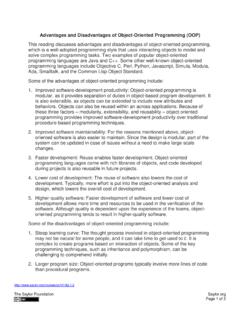
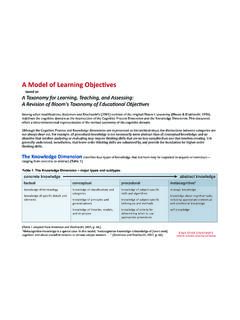
![Abstract arXiv:1506.02640v5 [cs.CV] 9 May 2016](/cache/preview/a/3/9/e/e/5/9/7/thumb-a39ee597b55a06b0e86e1cebc7152b1f.jpg)
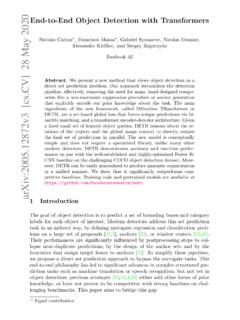
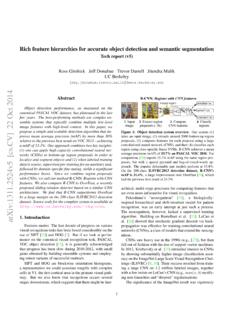
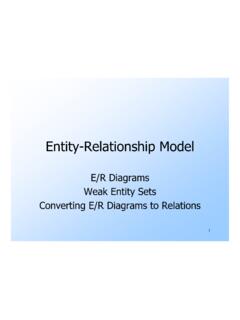
![arXiv:1512.02325v5 [cs.CV] 29 Dec 2016](/cache/preview/8/d/2/3/e/f/c/3/thumb-8d23efc382468588a2c4a27a24325f60.jpg)
